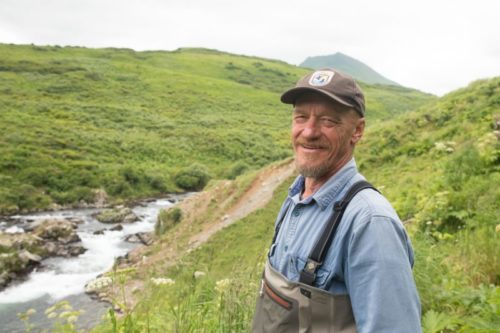
USFWS Refuge Biologist On Studying Alaska Wildlife
In our December 2018 issue, we interviewed U.S. Fish and Wildlife Biologist Bill Leacock, who participated in an Animal Planet series that followed Alaska refuge employees at Kenai and Kodiak National Wildlife Refuges. Here’s what Leacock told us about his study of bears, which included this memorable experience while he was analyzing bruins in Russia’s Kamchatka Peninsula:
“I’d never seen anything so spectacular in my life: salmon stacked on top of each other going up creeks that were 12 inches deep. I was just kind of thrown out there to sink or swim,” he recalls. “There were 18 bears around me and I didn’t know what the hell to do. But the odd thing was they would just look at me and let me go on my way down the stream and they would just go about their business.”

Leacock, who is now based at Arctic National Wildlife Refuge where he works with the large mammals there, participated in the USFWS Alaska Region’s podcast series, My Life, Wildlife.
Here’s a little snippet of what Leacock said in his interview when discussing his time at Kodiak (and he’s a professional, so he knows how to safely approach and keep his distance from these predators in the wild):
“If you’re not a threat you’re able to allow bears to look at you as not a threat. And they become more tolerant of you. That gives you all kinds of opportunities if you’re patient and take precautions and don’t think of them as teddy bears… They’re incredible creatures. They’re thinking, they’ve got their own personalities… For example, you get to see sows – different females with cubs, with kids. Each mother, how they raise their kids, is totally different. You’ve got the doting mothers, where they never leave their cubs out of sight. And if you’ve got the other mothers that kind of just ignore them; the cubs are running all over the place and getting into trouble.”
You can listen to Leacock’s thoughts and other USFWS Alaska employees here.



